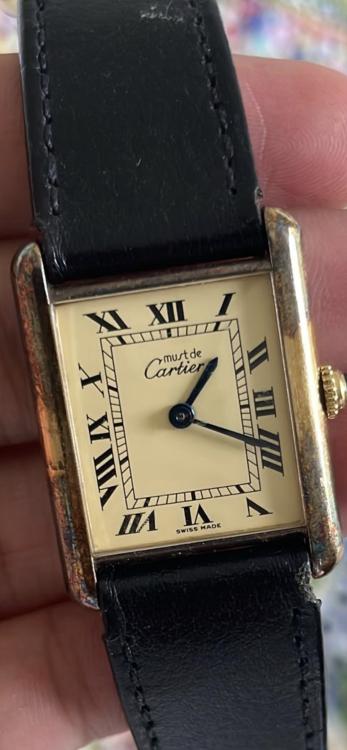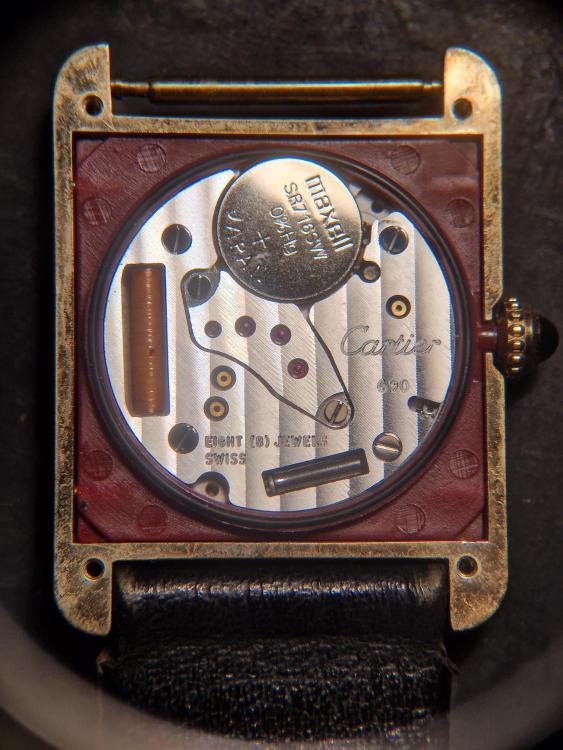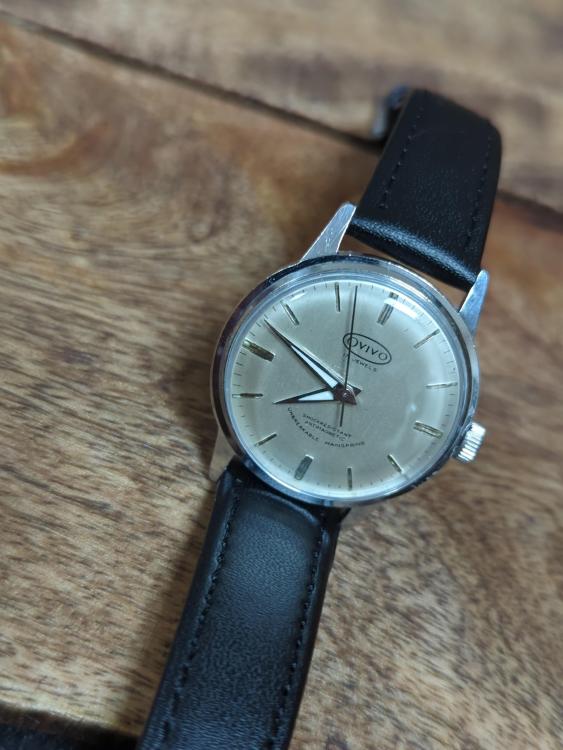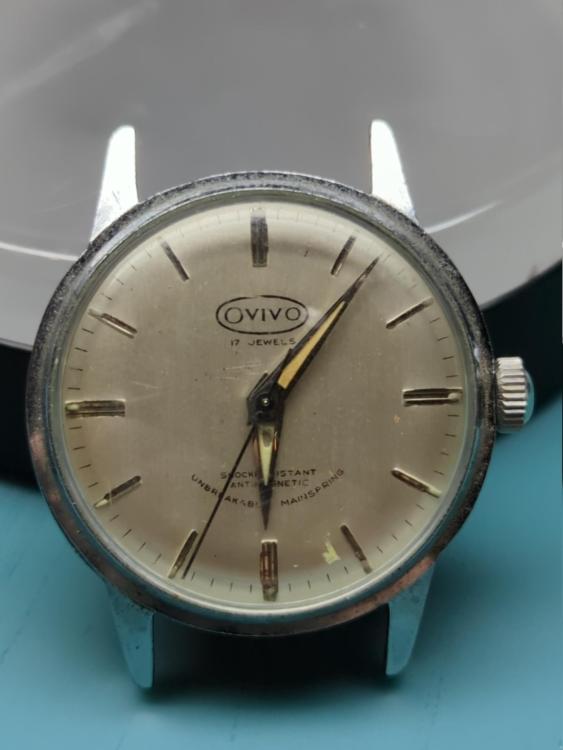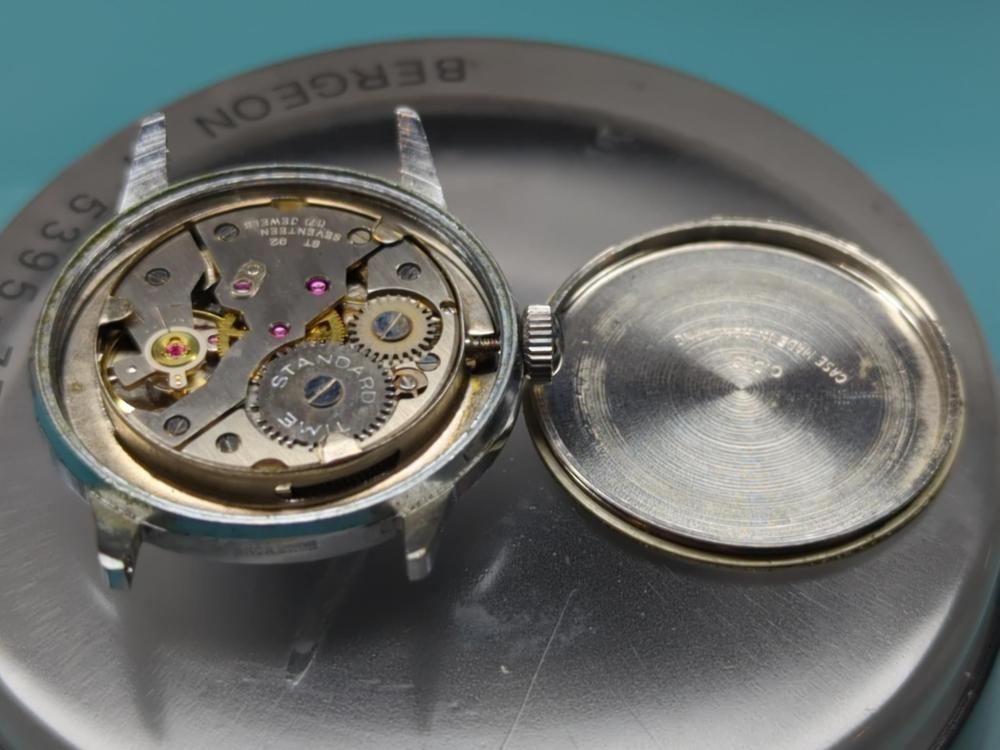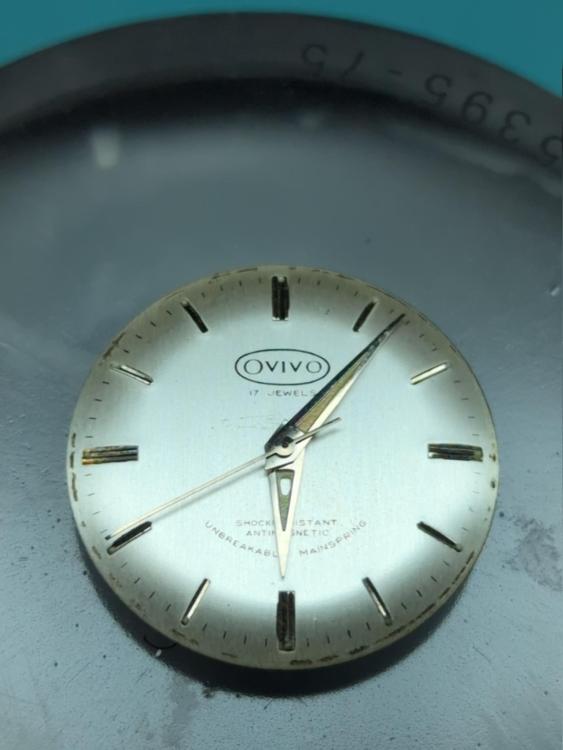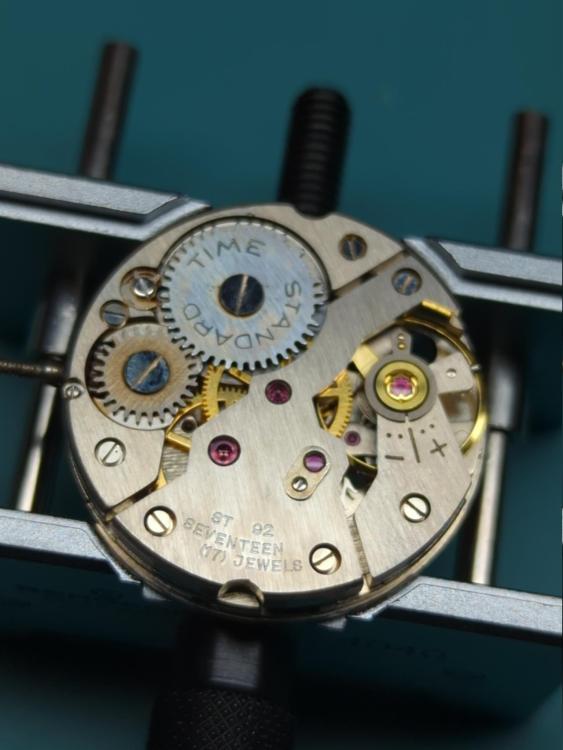Leaderboard
Popular Content
Showing content with the highest reputation on 06/19/23 in all areas
-
4 points
-
Interesting interpretation of the instructions of? Your interpretation of the quoted instruction above was to remove the individual stone and clean it which is not what the instruction was. Instruction was to clean the fork with the stones in place so we can evaluate the situation. Now that the stone is out everything is changed. Really hard to tell when it's out of the Fork but seeing as how fast it came out does make you wonder if other pallet stones are involved in this? Thinking about above quoted section that would refer to the link below https://www.watchrepairtalk.com/topic/26766-pallet-fork/#comment-222622 I think it would be helpful if you answered the questions from your previous discussion where you conveniently ignored the questions In a classroom situation you're looking at at least a week of eight hour days to learn how to adjust the stones and of course you learned how to check the entire escapement because you need that to adjust the stones anyway. Then in the classroom situation that doesn't fall of having the proper tools which most of us don't have because they're just too darned expensive. Then typically most people don't play with the pallet fork as it leads to nothing but misery. I believe currently there's another discussion on this group where someone is having issues with The pallet fork not running watch and misery. Oh and as a reminder both stones are physically different. See do have to put the right one in the right place and they both have the face in the proper direction and of course they have to be the right depth. Then The shellac is also supposed to be on the bottom not on the top of the fork.3 points
-
Can you remove the pallet fork, clean it nicely and post high magnification photos of both pallet stones. I think the entry stone might be damaged.3 points
-
Guy Montag wrote 'In my setup I have the camera facing the same way I do. I see a lot of top down camera setups that, because it's more convenient, have the camera mount clamped to the rear of the desk, which usually means the camera is facing opposite to the watchmaker. So everything in the video is reversed to what the watchmaker is seeing'. I'm trying my microscope for recording what I am doing. As stated by Guy, my setup leans away from me and is reversed. Using the video software I rotated the video 180 and it's so much easier to see. Looks the correct way. I have to admire people who the Youtube videos. Editing is more time than four of the time of the recording As a record for me, OK. Never going to post. And, it needs a verbal, no sound recorded. Post? Never going to happen. Phew!2 points
-
Something tells me this is going to be a long one Haha.. you must be the only guy walking around Iran saying "Eyup" and "now then peeps" to people you meet. I feel somewhat honored and responsible for folk giving you strange looks.2 points
-
Good eye sight peeps. Doesn't that entery stone look it doesn't belong? as if two stones from two different calibers?2 points
-
Don't remove the exit stone yet. The face of the entry stone should be pointing in the same direction as the exit stone.2 points
-
Yes, I know. That's why I asked @Murks to work on working watches until he has gained sufficient experience. Pallet jewel setting is extremely finicky and not a task for a beginner. Even someone with @Nucejoe experience steers clear of it. I've done a few but the resulting amplitude was just dismal. I have better results with clock pallet adjustments though. Maybe because they are so much bigger and easier to work on.2 points
-
All too often there is a reason for that. Don't ask me how I know. Nowadays, I always ask the seller for pictures of the movement and if there are none, then there will be no deal. You were really lucky but don't count on that luck to last. Very nice watch by the way and good luck restoring it.2 points
-
My friend asked my to look at her beautiful (quartz) Cartier Tank. Not running, gold plating didn't look good. I changed the battery. Ok, running again. But I assumed that the gold plating had started to come of and it would need restoration (or, my preference: acceptance of a cool vintage look). But I decided to give the crystal a good rub with Polywatch. Then... as I was polishing, the diry/oxidation of the case started to come off... so I continued and the case ended up as good as new. She was elated when she saw it. But seriously, what's up with that Côte de Genève décoration !?!? Can't keep a straight line across TWO parts @Cartier??1 point
-
Providing the right hairspring is on the balance wheel, running fast means an issue with hairspring which commonly are the spring fouling itself, sticky spring, damaged/ tampered with spring.... Helps if you show a pic of the coil preferably detached from the cock, or a vid of it as oscilator is running in the watch. Rgds1 point
-
I have serviced/ repaired a few Timex,s. I have used the menthod of cleaning the whole movement after removing some parts in my watch cleaning machine & I have stripped the movement down cleaned and assembled in the traditional way. Assembling a Timex if completely stripped down is a challenge as one single plate is used to hold all of the pivots. However I did not get a better performance with the traditional method, possibly because there are no jewels so pivot and pivot holes do have wear and so performance enhancements are limited. But even with a Timex,s very basis design they really do work well indeed and give many years of usage.1 point
-
So, Before the hookless barrel arbour debacle, I did get out my thermally controlled soldering iron and gave the heat treatment (300C if interested) to my busted spring parts. The technique worked well (in that they didn't snap). I needed to make the diameter 2mm to account for the "spring back" to 2.5mm. Thank you all for the advice.1 point
-
I did a couple of anchor polishing this year. One of them was for a friend's clock that would stop after 4 day's on a full wind. I changed his mainsprings and polished all his pivots but the clock was just erratic, as @oldhippy says. I was hesitant to repolish the anchor as the metal is extremely hard and exit pallet face is facing inwards and really difficult to work on. I finally bit the bullet and started filing the pallet faces but the metal is as hard as the file itself. I finally resorted to using a diamond file and triangular stones of decreasing grits. And after hours of draw filing and damaging all my stones, I managed to get the faces to an acceptable polish. The clock has been running for the past 2 months and I'm keeping my fingers crossed. I watched a video on resurfacing the pallets but I can't seem to find it now. The clockmaker used a piece of steel from an old mainspring and fused it with a low temperature solder so as to keep the temper of the steel. Sure looks like fun.1 point
-
1 point
-
Not only does it look damaged it looks like its facing the wrong way as well. Haha Tom you grumpy old git you.1 point
-
The lock on exit stone is too heavy to unlock, so move exit pallet back deeper into the fork slot so it can unlock. This will affect run to the banks thus may overbank, may also thorw the entery pallet out of adjustment. Pallet adjustment is a pain, lets first get the fork to do its thing so the watch runs, next level is when you seek to improve amplitude without rebanknig. Lets just call that advance level which I run away from everytime I face the challange. There are videos and lesson on how to adjust pallet stones, shouldn't expect to master the task as soon as you watch the first few vids. Good luck Pal.1 point
-
If I may give you a little bit of advice, you have posted this cry for help twice in short order, and not for the first time. Have a bit of patience and give us as much information and photos as you can and we will be able to help you better. sorry to be a grumpy old git, but nothing on here is an emergency, apart from the few professional folks we have here who are time limited we are amateur watchmakers, not a 24x7 support platform. Tom1 point
-
1 point
-
There were a number of pieces in that auction that went way over estimate. Very cool for Roger, that piece deserves recognition.1 point
-
1972 Tissot Seastar 2511 I picked this up off the bay for my 60th bday coming up next month. I went out on a bit of a limb as the lot had no pictures of the movement. It did however show an original case, bracelet, signed crown, and awesome dial. It is a non runner, but I am hopeful that it is not to difficult to diagnose. It winds almost too easy and is a bit sticky on the setting though the calendar works is fine and the push quick date set is also fine. I hope it is a loose screw on the ratchet wheel or something that is not allowing a wind into the mainspring as the balance spins quite easily with a blower. As no pix of the movement in the lot description I was hoping for a 784-2, but very surprised and happy with the 2511, which is the same as the Omega 1481! 20 microns gold plate in great shape, case with sharp lines and drilled lugs. You can tell I am quite smitten at the moment. No scratches on the movement or screws, the rotor doesn't seem to have play. I will take my time on this one and ease my way into this as a practice run for my eventual foray into my grandfather's Omega Constellation pie pan with a 561.1 point
-
1 point
-
Is anything in watchmaking ever easy? So, I need to add metallurgy to metrology, stereotactic brain surgery and an ability to cuss fluently in half a dozen languages. I'm truly doomed.1 point
-
Working on this OVIVO I picked up as part of a lot sale - didn't make it into the 404 club as it worked out to be $8.71. and looked in good shape: And I was very happy when I opened up the back as the movement looked like it hadn't been touched: And the dial was in even better shape BUT....... then I noticed the ratchet wheel have several teeth missing: And then I noticed that the click spring was missing and there was a lot of rust hiding under the ratchet and crown wheels. Fortunately I found a replacement ratchet wheel in my bag of spares and I fashioned a new click spring, I steeped the rusty parts in rust remover solution and they came up well, then off to the watch cleaning machine with my home made cleaning fluids. Next I assembled the train of wheels and everything on this side and all worked well, without any adjustment the amplitude close to 300 and rate was 1 sec/d with +/-5 beat error, very happy for this as a starting point, and all luck not skill. Will complete the dial side tonight, and put some of my new blue lume on the hands and then case up - hopefully there are no more hidden surprises, and I can post complete pictures tomorrow!0 points




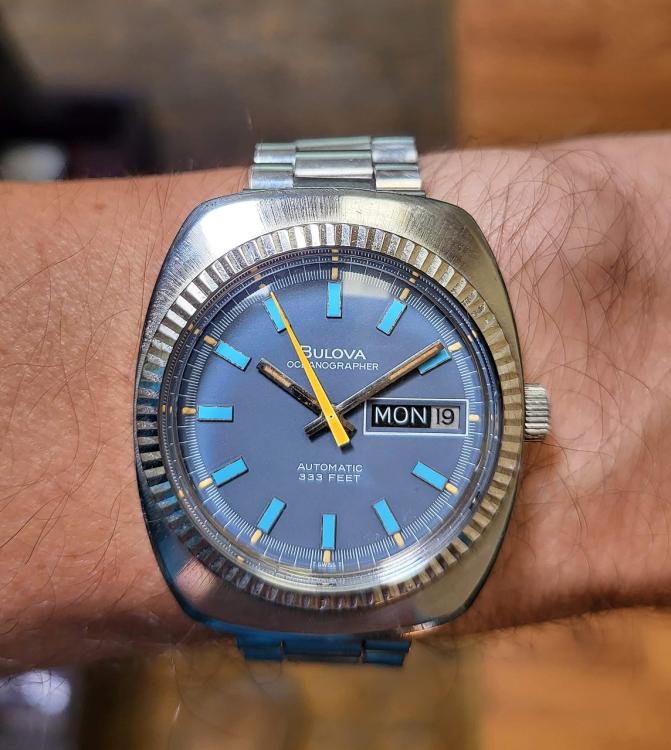
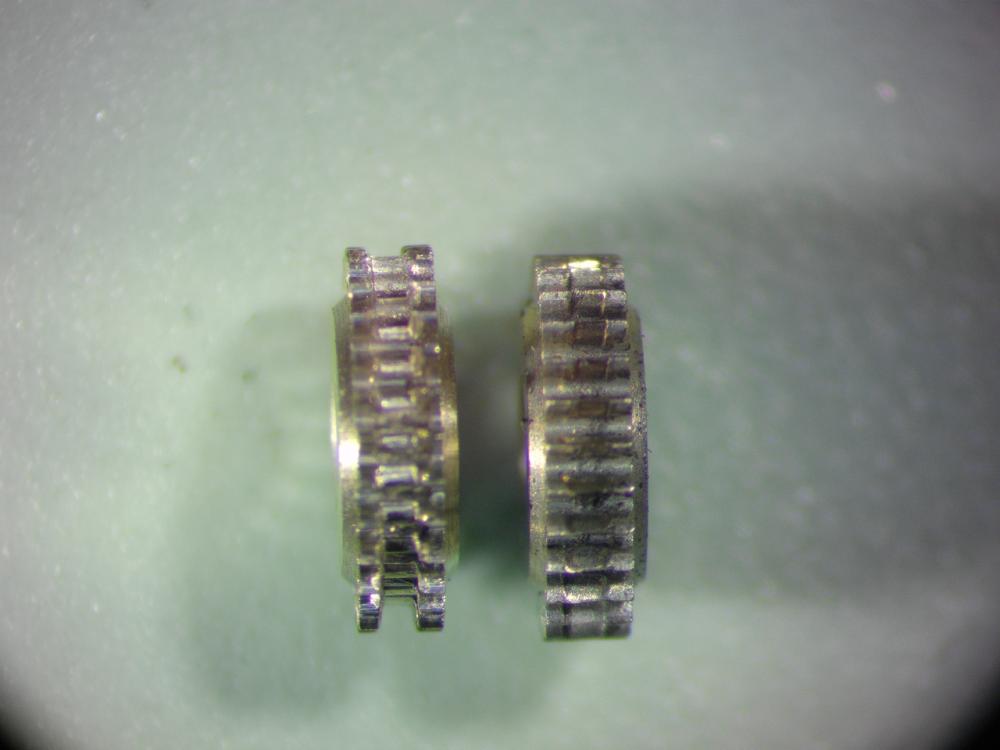


.thumb.jpg.cb17a66989f1e796fd4217db2e9ca9df.jpg)
